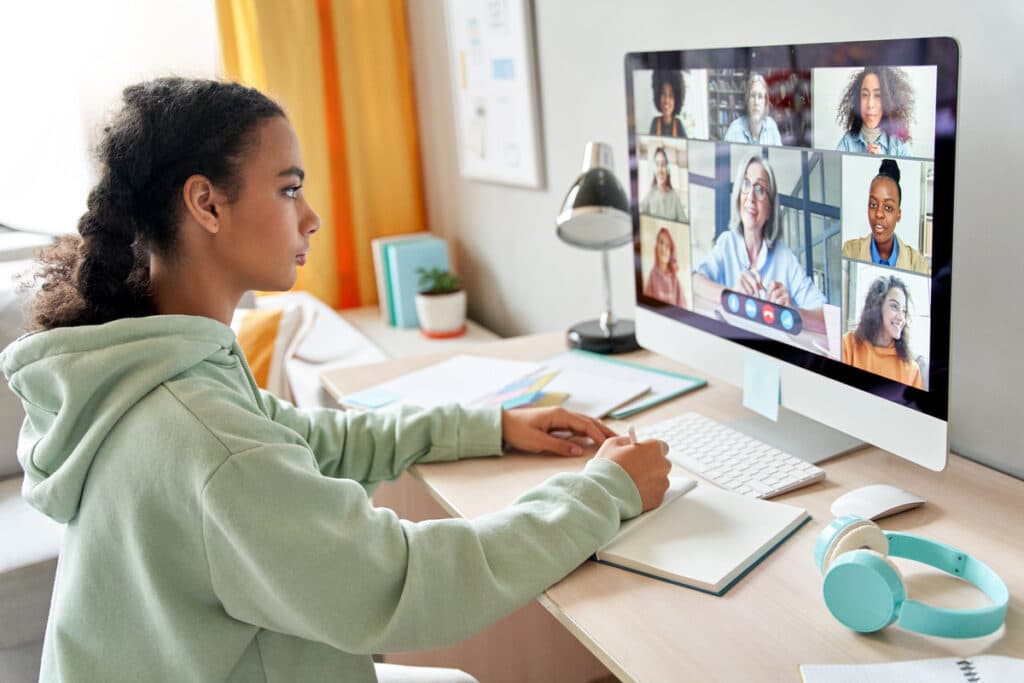The landscape of education has undergone a significant transformation in recent years, with the rise of remote learning taking center stage. The global shift towards online education has brought both opportunities and challenges to all touchpoints of the education system.
Let’s learn about five things you can do to create a learning environment that’s effective and enjoyable for everyone: students, teachers, parents, and administrators alike.
1. Infrastructure and Technology
There would be no modern school day without an internet connection. Lesson plans, emails, daily announcements, teacher-parent conferences—is there anything during your day that doesn’t happen online?
But, with so many schools and students relying on remote learning, it’s essential to have a strong infrastructure and reliable technology in place to support it. This includes high-speed internet access, updated devices for both students and teachers, and secure platforms for online collaboration, such as cloud VoIP. Without these elements, the success of remote learning and administration is at risk.
2. Access to Devices
Addressing the digital divide is a top priority when it comes to remote learning. Not all students and staff have access to the necessary devices for online education. Bridging this gap is crucial for ensuring equal opportunities.
Launching initiatives to provide students and staff with access to devices such as wifi networks, laptops, tablets, or Chromebooks is essential. Leveraging community organizations and government programs can be a powerful way to ensure that every student has the tools they need to succeed in remote learning.
3. Collaboration Tools and Platforms
Virtual collaboration is the cornerstone of remote learning. Enhancing communication among students and teachers is essential for a seamless educational experience. By adopting collaboration tools and platforms that enable real-time interaction, discussion, and teamwork, institutions can create an environment conducive to effective learning.
Platforms like Zoom, Microsoft Teams, or Google Meet can facilitate virtual classrooms and meetings. Additionally, integrated Learning Management Systems (LMS) can streamline content delivery and assessment, providing a comprehensive solution for educators and students.
Cloud VoIP (Voice over Internet Protocol) is also taking center stage in remote learning, as it provides a safe and effective way for students and teachers to communicate. With features like video conferencing, instant messaging, and virtual classrooms, cloud VoIP enables real-time communication without sacrificing security or quality.
4. Professional Development for Educators
For many teachers and administrators, the recent shift to remote learning has been uncharted territory. As such, providing professional development opportunities is crucial for educators to adapt and thrive in this new environment.
Offering educators training in online teaching methodologies, digital curriculum development, and virtual classroom management is essential. Equipping administrators with the skills needed to navigate and manage digital learning environments is equally important. This ensures smooth operations and support for educators, creating a cohesive and well-prepared team.
5. Cybersecurity Measures
Safeguarding student records, personal data, and confidential information is non-negotiable. Data breaches can have severe consequences. The New York City school district learned their lesson when the records of 45,000 students were leaked in the MOVEit attack.
MOVEit was a third-party vendor that managed the transfer of student data, and this case proved that vetting partners and implementing secure systems is essential. Remote learning environments are susceptible to cyber threats such as phishing attacks, ransomware, and data breaches, so locking down your cybersecurity is non-negotiable.
This includes the deployment of advanced cybersecurity solutions such as firewalls, endpoint protection, encryption, and security awareness training. Regularly updating and patching systems to address vulnerabilities is crucial to maintaining a secure learning environment.
Is Your IT Helping or Hindering Remote Learning?
When something impacts almost every second of the education experience, it’s worth investing in. From providing the necessary infrastructure, devices, and tools to ensuring cybersecurity and professional development for educators, IT can make or break remote learning.
With ANC Group, you can gain a trusted partner and expert in managing your IT needs, allowing you to focus on empowering remote learning and administration. Contact us today to learn how we can help you create a better virtual learning experience for your institution.

